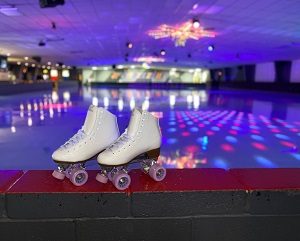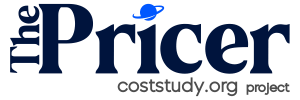Cost To Open A Skating Rink
Last Updated on December 29, 2023
Written by CPA Alec Pow | Content Reviewed by ![]() CFA Alexander Popinker
CFA Alexander Popinker
Maybe there are some of you who dream about having their own skating rink, but don’t know very much about how much would it cost. In this article, we are going to present the costs associated with building a skating rink.
How Much Does It Cost To Open A Skating Rink?
The amount of money you are going to spend for opening a skating rink would be anywhere between $400,000 and $3 million, depending on the option you go for, starting from scratch or renovating an old rink.
Here are some costs you need to consider.
Steel structures
You will have to consider the steel structure before starting to build a skating rink. These types of buildings offer a lot of benefits for businesses that require a lot of space. You can take advantage of a large building without the need for support beams which are common in traditional structures and would come in the way of the skaters.
You can significantly reduce the air conditioning and heating bills if you will use thermal insulation. You can still save by having a steel structure even if you were building an ice rink instead of a skating rink.
You might also like our articles on the costs to open a hookah bar, a restaurant, or a TopGolf franchise.
These buildings are perfect for air circulation, so mold or other problems caused by too much humidity are avoided. Plus, it would take less time to construct a steel building than a traditional wood building. Also, the maintenance cost will be lower and the building will have a longer service life.
Expect to spend anywhere between $15 and $30 per square foot when building a steel building. Though, the cost may go up to $125 per square foot, if you will add extra features. So, for a 17,000 square foot building, you will have to pay anywhere between $255,000 and $2,125,000, depending on how you choose to customize it.
In case you will rent the building, you should plan on spending around $4,200 per month.
Flooring
 If you want to open a skating rink you will need a building that is at least 17,000 square feet large, or even more. The floor of the skating rinks can be made of concrete or wood, or even plastic tile. The floors made of plastic tiles are not as resistant as those made of wood or concrete.
If you want to open a skating rink you will need a building that is at least 17,000 square feet large, or even more. The floor of the skating rinks can be made of concrete or wood, or even plastic tile. The floors made of plastic tiles are not as resistant as those made of wood or concrete.
The cheapest option is concrete. This is very resistant but has some disadvantages. It produces a lot of noise and gets slick. Also, it can be too bumpy and make it difficult to speed up. Plus, you can get hurt pretty bad when falling down on it.
The best option for skating rink flooring is considered to be wood. People like this flooring because it has great traction while skating. Also, the risk of severe injury when falling is reduced. Moreover, the wood looks much better.
Deposits
You need to take into consideration that in the first month of activity you will not make a profit and you will need some deposits for utilities and other services.
Also, you may need to pay deposits in case you will rent any specialty items or equipment.
Advertising
You will not have to pay all that much if you want to announce your big opening through a simple press release, but the ads in newspapers may cost up to $1,000, while the commercials on radio and TV may cost a few thousands of dollars.
Payroll Costs
When figuring out the payroll costs, you will need to answer some questions. How many employees will you need to run your skating rink? How much do you have to budget for payroll in the first month before serving the first customer? Will you need to pay an entire team to help you prepare the building before receiving the first customers? Will you do the payroll yourself or will you need to hire a payroll firm? For example, payroll companies charge around $30 to hundreds of dollars per month, depending on the number of employees.
Other Start-Up Costs
When opening a skating rink there are many costs you need to consider. In the table below you will find some of these.
| Computerized Registers | $3,750 |
| Insurance | $32,000 |
| Plumbing and Restroom Partitions | $54,000 |
| Heating and Air Conditioning | $245,000 |
| Signage | $13,500 |
| Parking Lot, Curbing System, and Striping | $148,500 |
| Exterior Lighting | $26,000 |
| Concession Dining Tables | $23,500 |
| Locker Room Furnishings | $10,500 |
| Counters | $25,000 |
| Skate Storage Racks | $15,000 |
| Rental Skates | $33,000 |
| Sound System | $43,000 |
| Specialized Lighting | $13,000 |
| Flooring and Installation | $175,000 to $475,000 |
These costs are estimative and will depend on your location and if you choose to build the skating rink from scratch or renovate an existing building.
In order to keep your rink going, you will need a maintenance plan. Expect to spend around $1,200 per day or almost $36,000 per month. This amount may be pretty high and you will need to know if it is worth opening your own skating rink.
Earning potential
Nowadays, there are around 440 skating rinks in the United States which bring a revenue of $420 million per year. They have an annual payroll of $115 million and almost 11,500 employees.
You can recover your investment, and even make a profit in many ways. At a skating rink, there are charges and fees for entrance, food, drinks, renting skates, and selling skates. Also, parties held at the rink and the skating lessons come at a cost. A more substantial income source is roller derbies.
Though, if you want to make money you will have to spend money at first. For example, you will have to invest in skates before starting selling or renting them. So, you will need a great marketing campaign to promote your business and recover your investment.
Great earning potential for the skating rinks is represented by the concessions. So, it would be a good idea to set up a kitchen and tables where the customers can eat while they are at the rink. In case you don’t want to cook or make the necessary additions to be able to produce food items, you can rent the space to somebody else and still get a part of the profits while offering extra services to your clients.
Conclusion
So, depending on which route you choose, to build a skating rink from scratch or to renovate an existing building, you will have to spend anywhere between $400,000 and three million dollars for your own skating rink.
There are many costs you need to consider, such as the legal fees, the renovations costs, the insurance, the permits, and the equipment cost. You should carefully plan the construction of the skating rink.


Leave a Reply
Want to join the discussion?Feel free to contribute!